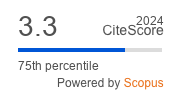Article | Open Access
Hungarian Gypsy Musician’s National Association: Battles Faced by Gypsy Musicians in Hungary during the Interwar Years
| Views: | 2754 | | | Downloads: | 1920 |
Abstract: The governments of the Horthy era did not formulate a central Gypsy policy and, consequently, the so-called ‘Gypsy issue’ fell fully into the hands of the assigned ministries and local authorities. The public authorities acted at their own discretion: Largely, they acted according to their basic tasks and understanding, or simply ignored the issue. As a result, the Ministry of the Interior and the Ministry of Welfare and Labour were the decisive authorities in this issue. Mainly law enforcement dealt with travelling Gypsies—a small portion of the estimated one hundred thousand Gypsies living in Hungary—the majority of whom lived in ‘colonies’ and were dealt with as an issue of public health. Regarding Gypsies, the same era is frequently judged by the legal action affecting these travellers and the often criticised measures regulating public security and health. The foundation of the Hungarian Gypsy Musicians’ National Association, which intended to represent the interests of nearly ten thousand Gypsy musicians, somewhat changed the picture that had developed, since the organisation enjoyed the full support of the heads of the Ministry of the Interior and the city of Budapest. Regulations were enacted to protect their interests and initiatives. Behind the patronage, one might note, was that after the Treaty of Trianon Gypsy music became part of irredentist ideology and the revisionist movement, and therefore the interests and claims of the Gypsy musicians fully fitted the age. The topic is very important for social inclusion today because Gypsy music continues to be considered part of Hungarian cultural heritage and thus gives Gypsies work and integration opportunities.
Keywords: cultural heritage; Gypsy association; Gypsy musicians; Hungarian Gypsies; Hungary; interwar period; jazz musicians
Published:
© Tamás Hajnáczky. This is an open access article distributed under the terms of the Creative Commons Attribution 4.0 license (http://creativecommons.org/licenses/by/4.0), which permits any use, distribution, and reproduction of the work without further permission provided the original author(s) and source are credited.


